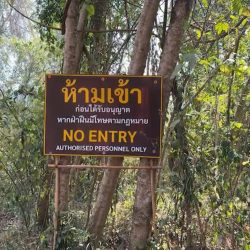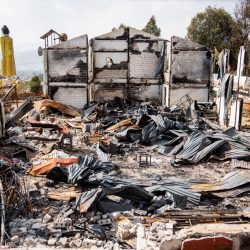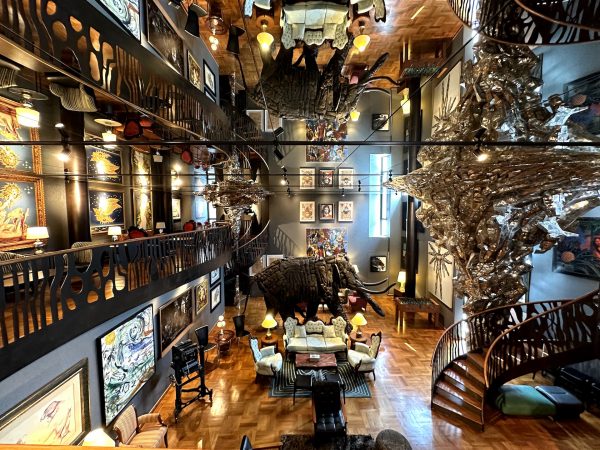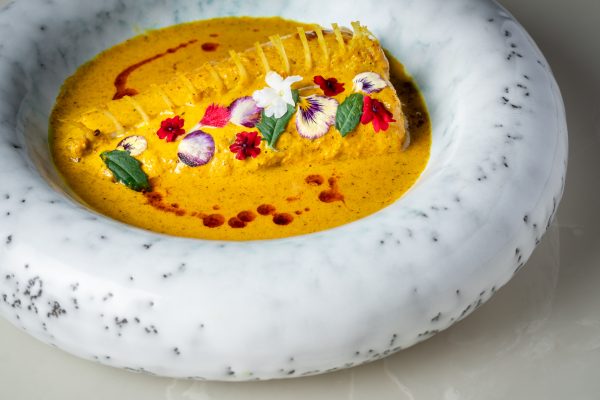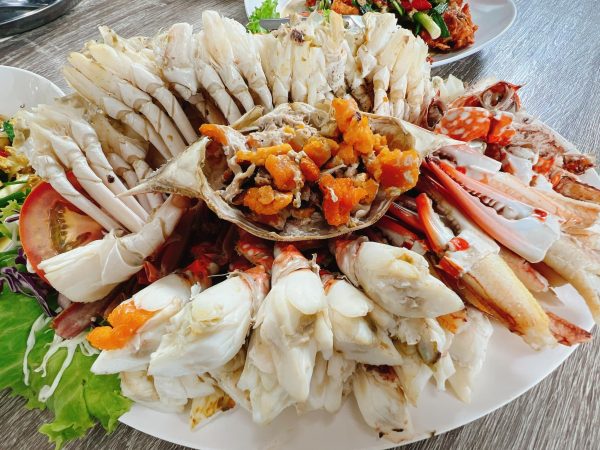A new art exhibition explores the Thai capital beyond its slogan

If you find yourself rolling your eyes at the overly rosy picture painted by Bangkok’s slogan, “Krungthep Cheewit Dee Dee Thee Long Tua” (Bangkok: The Perfect Life), then a new exhibition at the Bangkok Art and Culture Centre (BACC) might be the perfect antidote.
How is Bangkok perceived through your eyes? Is it all gridlocked traffic, air pollution, dense population, unwalkable footpaths, mushrooming high-rises, and poorly-managed garbage? Whatever one thinks of Thailand’s capital, this exhibition challenges us all to confront what lies beneath.
Titled “Bangkok 242: A Space for Sharing,” the exhibition is more than just an artistic showcase. It’s a platform for critical engagement with the complexities of life in the Thai capital.
Through a combination of creative activities, contemporary media art, and interactive installations, the exhibition challenges visitors to confront the social issues simmering beneath the surface of Bangkok’s bustling facade.
This exhibition is perfect for any art student to explore as it combines a range of disciplines. Curated by Luckana Kunavichayanont, Pracamkrong Vajiravarabhakti, and Kalaya Kovidvisith, the show features works by 13 artists and two organizations.
These diverse voices come together to present a multi-layered exploration of Bangkok’s past, present, and potential future.
Visitors can expect to encounter satirical and subtly provocative works. Sometimes the artworks invite interactive experiences, asking visitors to engage to get the message the artist wants to convey.
“Snake Staircase: The Good Life in Bangkok” is a big board game inspired by snakes-and-ladders, its content drawn from the city’s problems such as traffic congestion, BTS malfunctions, and even a recently collapsed bridge.
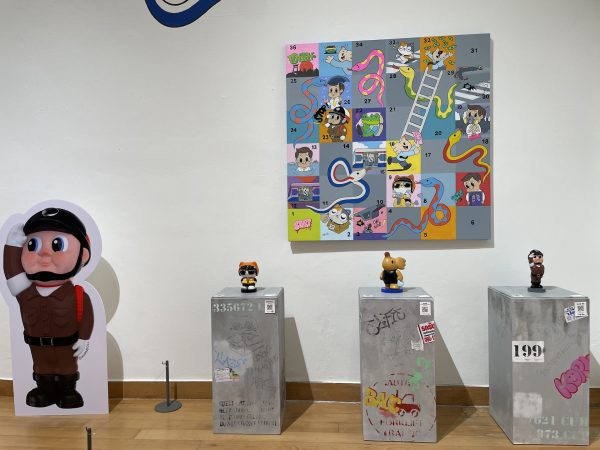
With dice made from inflatable balls, the board game allows participants to roll the dice and move along the board based on their scores. Each square depicts various problems encountered in real Bangkok. The game is reminiscent of childhood board games but with a twist.
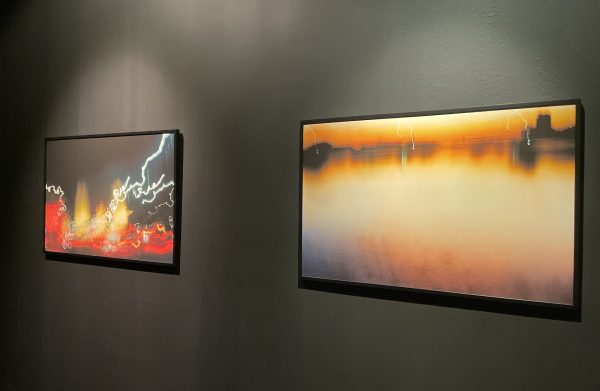
Moving deeper into the exhibition on the 8th floor, visitors are invited to participate in the city building.
Artist Kwanchai Lichaikul’s “U-Scape: City in Dream (That Only Remains a Dream)” encourages visitors to participate by arranging the images of the 12 prints on a board that includes historical landmarks, green spaces and public areas, to create a complete and unique cityscape.

The resulting cityscapes differ each time viewers rearrange the 12 images, making it an artwork that is never identical.
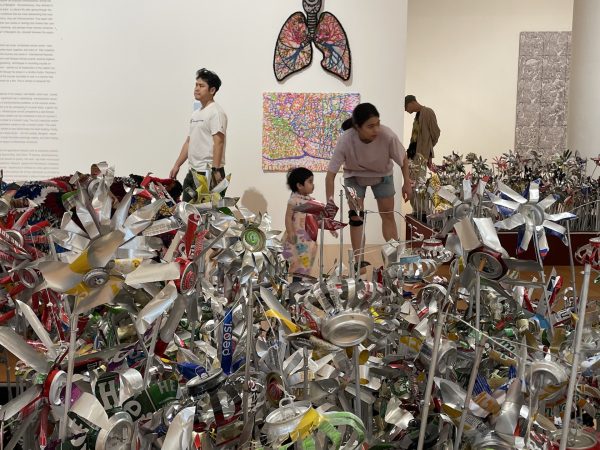
Another corner features a field of “flowers”. Artist Wishulada Panthanuvong’s “Canal of Treasures: Plastic Flower Garden” features installation art mimicking a “Human Garden” filled with recycled materials including flowers made from plastic, aluminum cans, snack wrappers, as well as cloth scraps and CD pieces collected from various canals in Bangkok.
The two main highlights are the lung sculpture and the map of Bangkok’s canals, made from used straws collected from areas surrounding the city.
Satirical typography and cross-disciplinary explorations
Thought-provoking artworks also come in the form of SATHU x Thaipologic’s typography. The artists have creatively arranged the Thai letters in a poster format resembling educational posters from the past, with backgrounds relevant to the respective consonants.
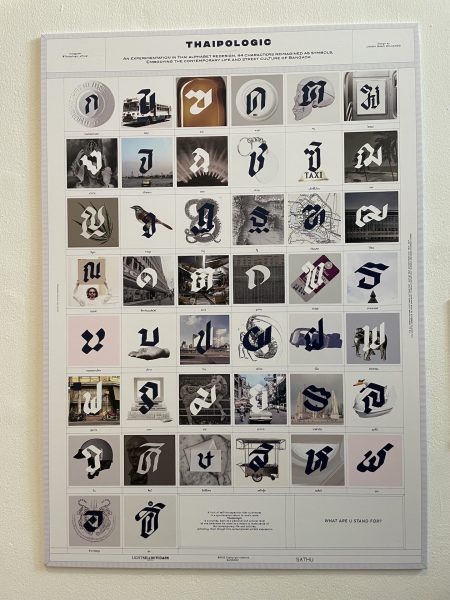
However, they cleverly use satirical and contemporary references. For example, “ฝ” (Foh Fa) represents “เจ๊ไฝ” (Jay Fai), the Michelin-starred chef and queen of Bangkok’s street food.
It shows the iconic black-framed glasses worn by the chef. Another one shows “ญ” representing “Kanja” (cannabis). It used to be “Yorying Sobha” (meaning beautiful woman).
“Bangkok 242” – the journey of this capital over 242 years – has also inspired artists to come up with cross-disciplinary works. In one room, “Going to Bangkok, 2024” a short film by Nitivat Cholvanichsiri is screened.
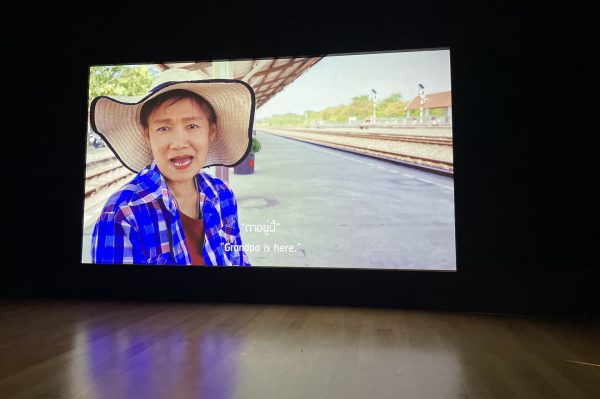
It visualizes the thoughts of the characters to communicate a variety of intriguing perspectives on the nature of Bangkok, a city that holds the hopes and dreams of many.
Another corner by ESIC Lab features noise pollution. It takes the form of a platform with five speakers, each containing a round white foam ball, roughly the size of a ping-pong ball, that moves in response to the sounds transmitted through the speakers.
The team collected various sounds from Bangkok, such as BTS trains, canal boats, pedestrian crossing lights, motorcycle engines, and street vendors shouting and mixed them together to create a dynamic and synchronized soundtrack lasting for a few minutes. The artists also use generative art on LCD screens.
There are many more thought-provoking, satirical, and inspiring works in the “Bangkok 242” exhibition which will prompt visitors to question, analyze, and engage with the city they inhabit.
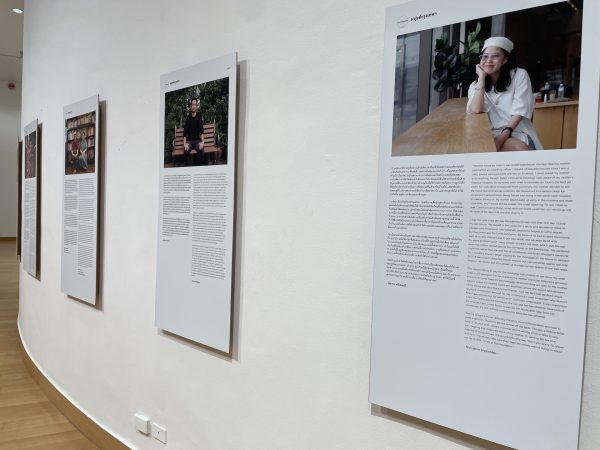
In the end, visitors cannot help but ask themselves whether Bangkok is a perfect place and if not, some of the things that can be done to improve this ill-fated capital.
Urban pleasure or urban blight?
Bangkok 242 continues until May 19 across the entire 8th floor of the Bangkok Art and Culture Center (BACC). It is open daily except Mondays. The BACC can be reached by BTS (National Stadium Station) Admission is free.
By Thai PBS World Feature Desk

